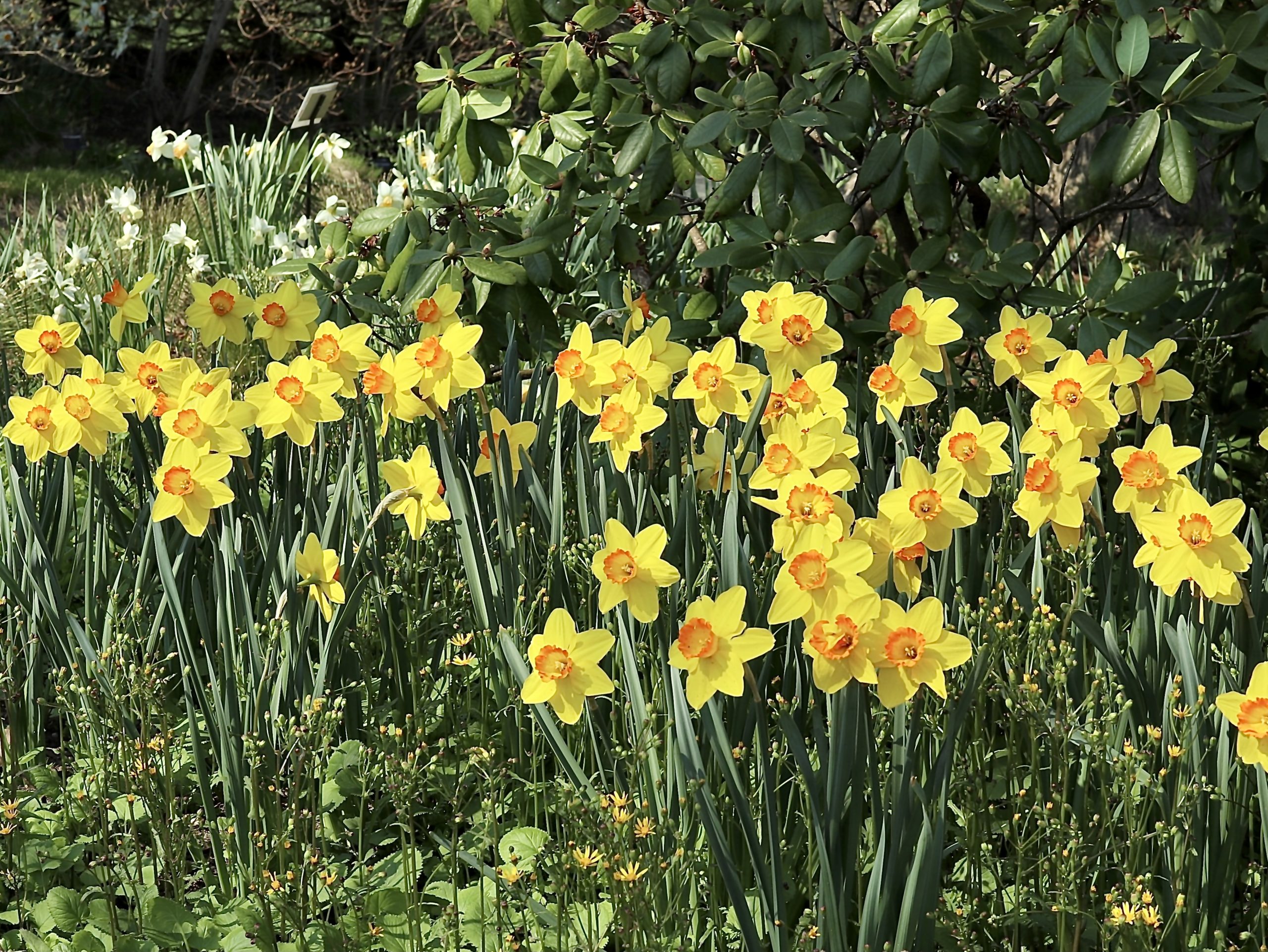
When the first daffodils begin to show color, we are surely reminded that spring is around the corner. A crescendo follows of ever more and more blooms in every shade from gold to orange and cream to white.
Every year the blooms of a million daffodils announce “The Rites of Spring,” which is the annual opening celebration of East Hampton’s LongHouse Reserve visitor season. And what a show it is. The whole parking lot is flanked with pure white Narcissus “Ice Wings.” In the Golden Path you will find common “King Alfred” and “Dutch Master” interplanted with many other more unusual shades of Narcissus. The path to the plaza greets you with a large stand of the elegant “Jet Fire.” The grass garden is completely covered in white with “Ice Follies” and large sweeps of “Thalia.” In many parts of the garden there are large areas that combine different varieties in clump formation.
But besides the showy large-flowered varieties, there are also plenty of the more unusual species and so-called miniature varieties. Some of these only reach a couple of inches, but others could almost get as tall as their giant trumpet cousins. The reference to “miniature” here is in regards to flower size, not the height. Most of the miniatures are much better suited as companions to perennial plantings than their massive relatives.
Some of our newly discovered favorites are: N. “White Petticoat,” N. “Sabrosa,” N. “Winter Waltz, N. “Minnow,” N. “Sailboat” and N. “Katie Heath.”
Daffodils are usually planted as dry bulbs in the fall. They are much more reliable and long lived than tulips, for example. One reason is daffodils’ toxicity to predators. The botanical name Narcissus is derived from the Greek word Narco, meaning numbing. Deer won’t nibble on the tops, and voles and other rodents won’t attack the roots or bulbs.
Any time between October and December is fine for planting — as long as the ground is not frozen. Plant bulbs at least 2 inches deep; no fertilizer is needed at planting time.
To avoid over planting, take pictures of your beds the April or May before the fall planting, so you’ll have an idea of how much space there is to fill when the beds are in bloom.
In my opinion, the best way to plant daffodils is in a wide grid of clusters of 10 to 20 bulbs in one hole. If you plant in a garden that has already established perennials and grasses, place the clusters in-between the perennials. Choose a sequence of early-to-late-blooming varieties and keep the earliest blooming ones toward the back so the spent flowers won’t spoil the later display.
A few quick observations on flower arrangements: To avoid real hardship and lots of cursing, always choose a vase with a narrow opening. V-shaped vases will not display daffodils very well because they will always flop toward the sides and create ugly bare spots, unless you use the unsightly method of Scotch taping the top in squares. Unlike in a dahlia arrangement, it is usually not satisfactory to stick the flower stems directly into the vase one by one.
Start by laying out your freshly picked daffodils in mounds of each variety in front of you. Begin with two or three of the same variety and form a tight flower bonnet. Then add more, but with every layer around, go slightly lower. After you have assembled 10 to 15 stems, tie a rubber band lightly around the stems to keep them all in place, but not too high up so the stems can unfold a little once released in the vase, after cutting the lower ends of the stems to the same length.
When harvesting daffodil flowers from the garden you do not need a knife or scissors. They pull up much easier by hand, and you don’t end up damaging foliage.
There are many Dutch bulb growers who export bulk loads of daffodil bulbs that are grown all over the world. We particularly love the selections and the quality of Brent & Becky’s Bulbs in Virginia.
See you at LongHouse soon,
Holger Winenga, horticulturist.